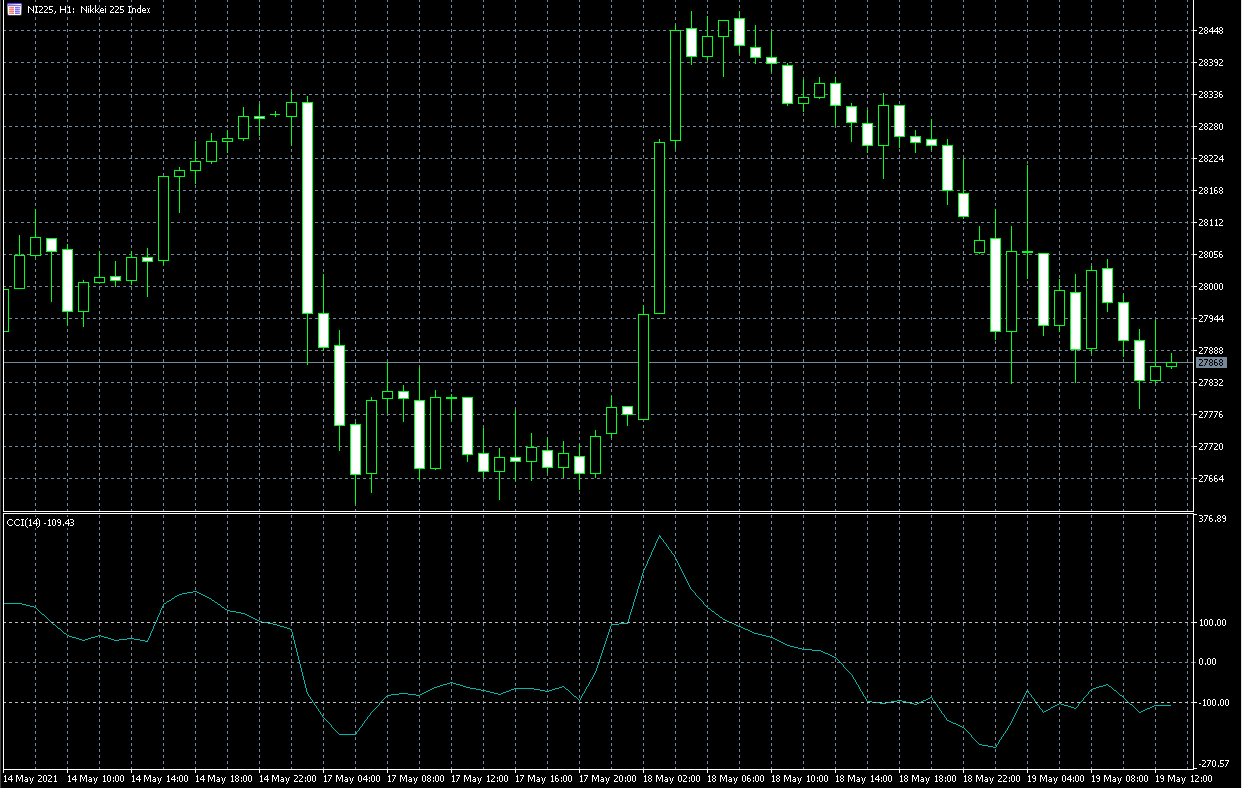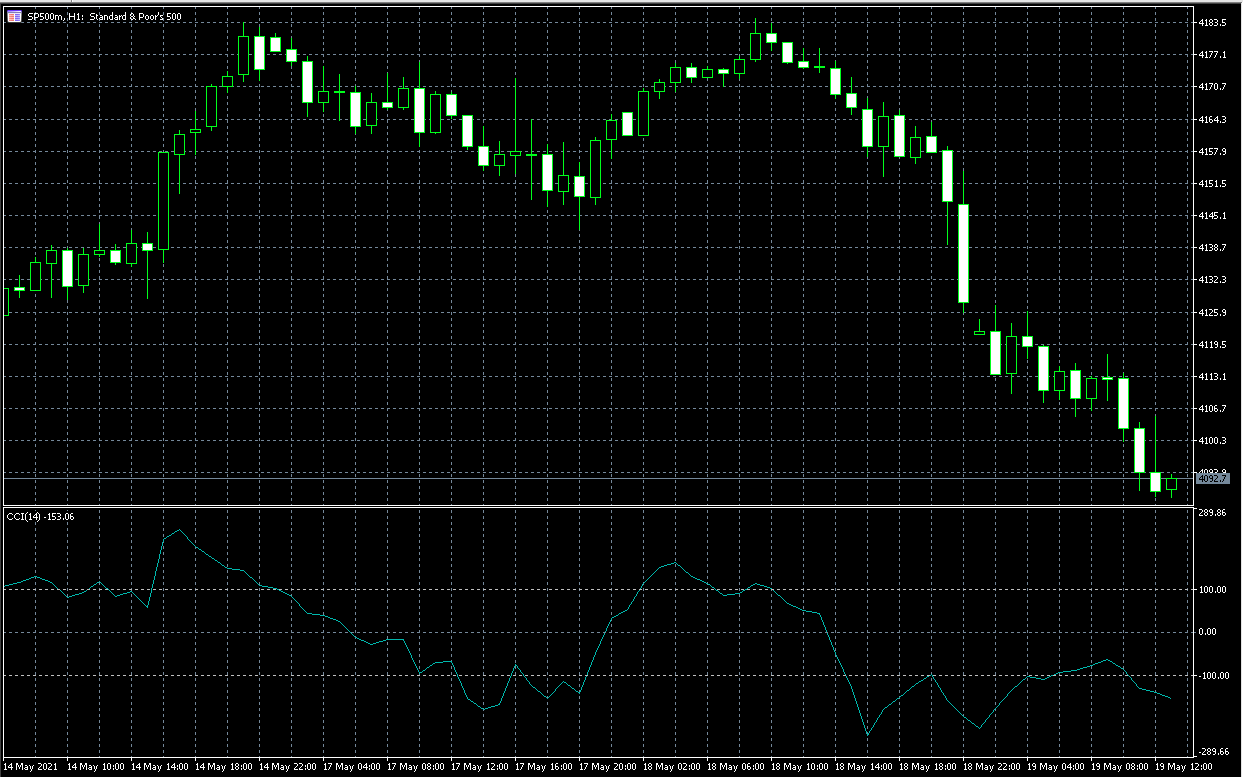Understanding Stock CCI Indicator - With Examples
The Commodity Channel Index indicator evaluates the relationship between the price of a security and its moving average. The indicator is plotted around three horizontal lines that form a channel. One channel line is set at zero, another at -100, and the third at +100. The CCI is calculated so that approximately 70 to 80% of price movements fall between negative 100 and positive 100. If the price moves above the moving average, the CCI line is above zero.
On the other hand, If it crosses below the moving average, the CCI stock indicator falls below zero. However, when the price deviates significantly from the moving average, the CCI line crosses outside the outer channel lines, and the underlying security could be considered overbought or oversold.

Some investors might use the various crosses of the channel lines to help identify potential entry and exit signals. For example, if the CCI drops below the -100 line and then crosses back above it, an investor might see this as a potential entry signal. On the other hand, if the CCI rises above the +100 line and then crosses back below it, an investor might see this as a potential exit signal.
Let’s try to explain the CCI indicator for stock traders with some kind of example. Remember that the indicator is showing usually right below the default chart of the specific stock. Therefore it is always following the market movements. The only difference here is that the default chart shows the price per share, while the CCI chart shows just the points between +200 and -200.
In order to have a better understanding of this indicator, let’s take the Apple stock chart as an example and try to figure out the last 20 days. If we take a look, on May 12th, the CCI was showing that the points were out of bound from -200, meaning that the stock was oversold and a correction was coming. This was a perfect time to enter the market. Coincidentally, once that -200 points mark was reached at $122.65 per share, a correction soon occurred, putting the share price at $127.18 on May 14th.
If we take a look at the stock market CCI indicator chart, we see that this price reached 0 to -100 points, meaning that it was still in the “undervalued” zone more or less. However, this was not necessarily the perfect call for an entry point, in fact, it was an indication that a regular correction was on the way and nothing too big was to be expected. In fact, it started dipping down again on May 15th and heading towards another outbound from -200 points.
The perfect entry points are always when the CCI shows below -200 or somewhere near -200 points, while the perfect exit point is when it shows +200 or somewhere near +200 points. Anything in between is a bit riskier and much harder to predict.
The Dangers of Using CCI Indicator for Stocks

Every trader should keep in mind that the CCI, like other indicators, is not a guarantee that the price of a security will change. Therefore, it is extremely important that every investor should take the risks into full consideration.
As with other oscillating indicators, one risk of using CCI indicators for stocks is that security can remain overbought or oversold for long periods of time. These stretches can be filled with channel line crosses, and even divergences, that convey false signals and fail to deliver the expected results. So every investor should take into account the fact that the CCI is not a 100% guarantee indicator and some traders fail to see that in a lot of cases while trading in the stock market.
One of the most important dangers of using CCI indicators for stocks includes sustainable outbound levels and news announcements. We will talk about each of them briefly down below.
Sustainable Outbound Levels
A sustainable outbound level is when a stock remains overbought or oversold for a long time. For example, we mentioned that when something is above +200 points it means it’s a good time to sell. The same thing happens when it is -200 points it means it is a good time to buy. But the thing is that these periods where the CCI stock indicator shows these points can go on for a long time, therefore leading traders to assume that they took a bad position and look for better opportunities, potentially leading to losses.
Besides, if the trader decreases the risk to reward ratio and sets the profit target very close to their entry, their win rate will increase because the price at the given moment will have an easier time reaching the profit target. Also, investors should know that they are not recommended to traders blindly, they should backtest every strategy before risking it in real trading.
News Announcements
One thing that needs to be very clearly outlined is that the CCI indicator for stock traders mostly measures a trend. This means that a lot of people do not expect something unusual to happen to the stock that would change this trend.
On the other hand, there is always a chance that something unexpected happens in the stock market. For example, something as simple as a revenue announcement from the company could break the trend, leading people to buy the stock even more even when the CCI was showing that it was being overbought. This type of news or important events happens every time so traders should always be alerted about this issue and expect the trend changes while trading in this financial market.
Big events like earnings can, and often do, override signals from the CCI, so it is important to be aware of announcements and headlines. Sure, trading stocks with a Commodity channel index can provide context to trends, be used to identify divergences, and even help with the timing of potential entry and exit signals. However, investors should understand that many factors influence the price of a security. Traders often combine oscillating indicators, like CCI, with trending indicators, like a moving average. A lot of them include fundamental analysis as well.